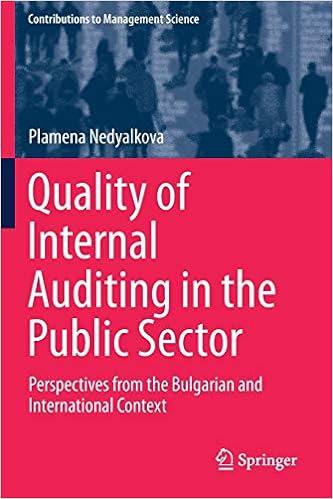Question
Suppose a competitive exhaustible resource industry has stock S0, faces a demand curve p(t) = p b Q(t), and has marginal costs of extraction equal
Suppose a competitive exhaustible resource industry has stock S0, faces a demand curve p(t) = p b Q(t), and has marginal costs of extraction equal to c0. The interest rate is r. Let doubling times associated with this interest rate be denoted as td, 2td, etc.
a) Draw the price-path diagram showing the equilibrium price, which you should label as p0(t). Assume that along this equilibrium price path, the resource is exhausted at time T0 = 3td. Show the value of oil in the ground, 0 associated with this equilibrium path.
(b) Suppose that at time td, the cost of extraction unexpectedly rises to c1, where c1 > c0. Suppose that the unanticipated equilibrium price path is equal to the initial price path p0(t) for all t. Explain, with reference to the three conditions you identified in part (a) why this can not be the new equilibrium price path given that the extraction cost has unexpectedly risen to c1.
(c) Suppose that the unanticipated equilibrium price path after time td is p1(t), where p1(td) = p0(td), but p1(t) satisfies the complaint you had about p0(t) after td. Explain why this can not be the new equilibrium price path given that the cost of extraction has unexpectedly risen to c1.
(d) Suppose that the unanticipated equilibrium price path is p2(t), where p2(T0) = p b , but p2(t) satisfies the complaint you had about p0(t) after td. Explain why this may not be the new equilibrium price path given that the cost of extraction has unexpectedly risen to c1.
(e) Given what you have learned about the unanticipated price paths through parts (b)-(d), draw the equilibrium unanticipated price and quantity paths, pu(t) and Qu(t) on your graph. What happens to the value of oil stocks, that is, how does u compare with 0? Relative to time T0, what happens to the length of time, TU , before the resource is fully exhausted in the unanticipated equilibrium?
(f) Suppose the change in c to c1 from c0 at time td is fully anticipated at time t = 0. In which interval, (0, td) or in [td, TU ) would producers prefer to sell their stock? Suppose that all participants in the market anticipate the change in c, show the equilibrium price, pA(t) path on your diagram. By how much must the price jump at time td in order to make producers indifferent between producing in each interval? Explain. How does TA compare to T0 and to TU ? Explain.
Step by Step Solution
There are 3 Steps involved in it
Step: 1

Get Instant Access to Expert-Tailored Solutions
See step-by-step solutions with expert insights and AI powered tools for academic success
Step: 2

Step: 3

Ace Your Homework with AI
Get the answers you need in no time with our AI-driven, step-by-step assistance
Get Started


